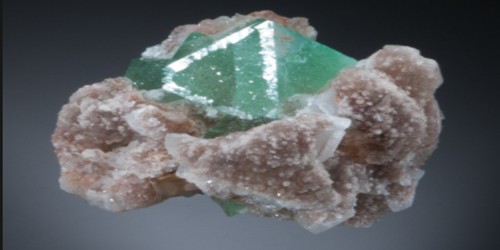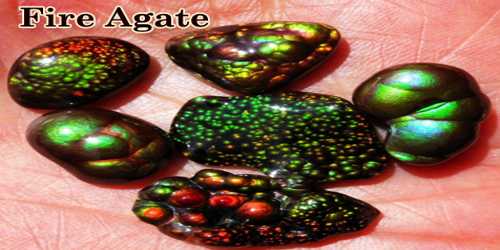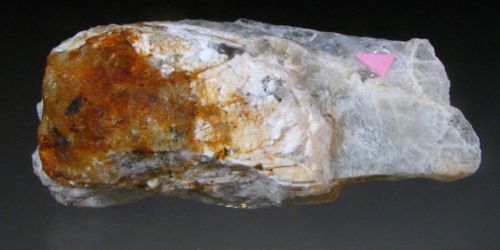Fluorite (also called fluorspar) is the mineral form of calcium fluoride, CaF2. It is a halide mineral composed of calcium fluoride. It crystallizes in isometric cubic habit, although octahedral and more complex isometric forms are not uncommon. The mineral derives its name from the Latin word fluere, which means ‘to flow’.
General Information
- Category: Halide mineral
- Formula: CaF2
- Crystal system: Isometric
- Crystal class: Hexoctahedral (m3m)

Fig: Fluorite
Properties
Fluorite can be observed in blue, red, green, yellow, and white colors. It has transparent to a subtranslucent appearance with a white streak, vitreous luster, and perfect cleavage. This mineral exhibits fluorescence and has a relative hardness of 4 and an average density of 3.13 g/cm3.
- Color: Colorless, although samples are often deeply colored owing to impurities.
- Crystal habit: Well-formed coarse sized crystals; also nodular, botryoidal, rarely columnar or fibrous; granular, massive
- Fracture: Subconchoidal to uneven
- Tenacity: Brittle
- Mohs scale hardness: 4 (defining mineral)
- Luster: Vitreous
- Streak: White
- Diaphaneity: Transparent to translucent
- Specific gravity: 3.175–3.184; to 3.56 if high in rare-earth elements
- Solubility: slightly water soluble and in hot hydrochloric acid
Occurrence
Fluorite occurs in an accessory mineral in granite, granite pegmatites and syenites; around fumaroles; in carbonatites and alkaline intrusives. It is a widely occurring mineral that occurs globally with significant deposits in over 9,000 areas. It is a common mineral in deposits of hydrothermal origin and has been noted as a primary mineral in granites and other igneous rocks and as a common minor constituent of dolostone and limestone.
It is closely associated with apatite, scheelite, wolframite, topaz, cassiterite, sulfides, celestine, barite, calcite, dolomite and quartz.
Uses
Fluorite is a colorful mineral, both invisible and ultraviolet light, and the stone has ornamental and lapidary uses. Industrially, fluorite is used as a flux for smelting, and in the production of certain glasses and enamels. The purest grades of fluorite are a source of fluoride for hydrofluoric acid manufacture, which is the intermediate source of most fluorine-containing fine chemicals.
Information Source:
















